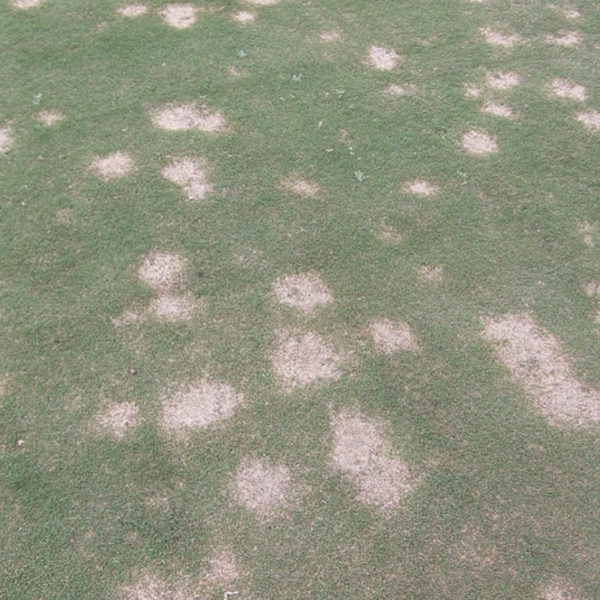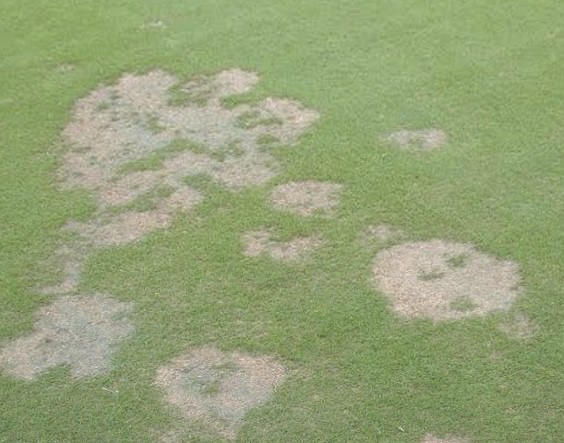
Spring Dead Spot
Ophiosphorella (formally Leptosphaeria) herpotricha, O. korrae, and O. narmari.
Spring Dead Spot (SDS) is part of the ERI Family of diseases. Symptoms can appear in lower soil temperatures when growth is slow to dormant, depending on the season, as early as late Autumn. Traditionally it was found often in late winter and spring, when turf resumes its growth and will present circular, bleached dead patches. Patches are often also visible in autumn and in winter. The patches can range from a few centimetres to over one metre and can reappear in the same spot for many seasons.
Intensively managed couch grasses are most affected with SDS. The pathogen grows more actively in cool, moist conditions. The most damaging temperatures are around 15°C, when the grass is still semi-dormant yet the pathogen is very active.
Preventative measures are the best when looking to control SDS. 2 applications of an appropriate fungicide in late summer and early Autumn (end of February and end of March for the southern hemisphere) is the best practice when looking to control Spring dead spot.
When the couch breaks dormancy in the spring, the damage is noticed where competition from the disease restricts growth.
See more on SDS from our friends at Syngenta – https://www.syngentaturf.com.au/disease-roots/spring-dead-spot
The experts at Lawn Addicts can help with lawn care programs for Spring Dead Spot, based on grass identification.

